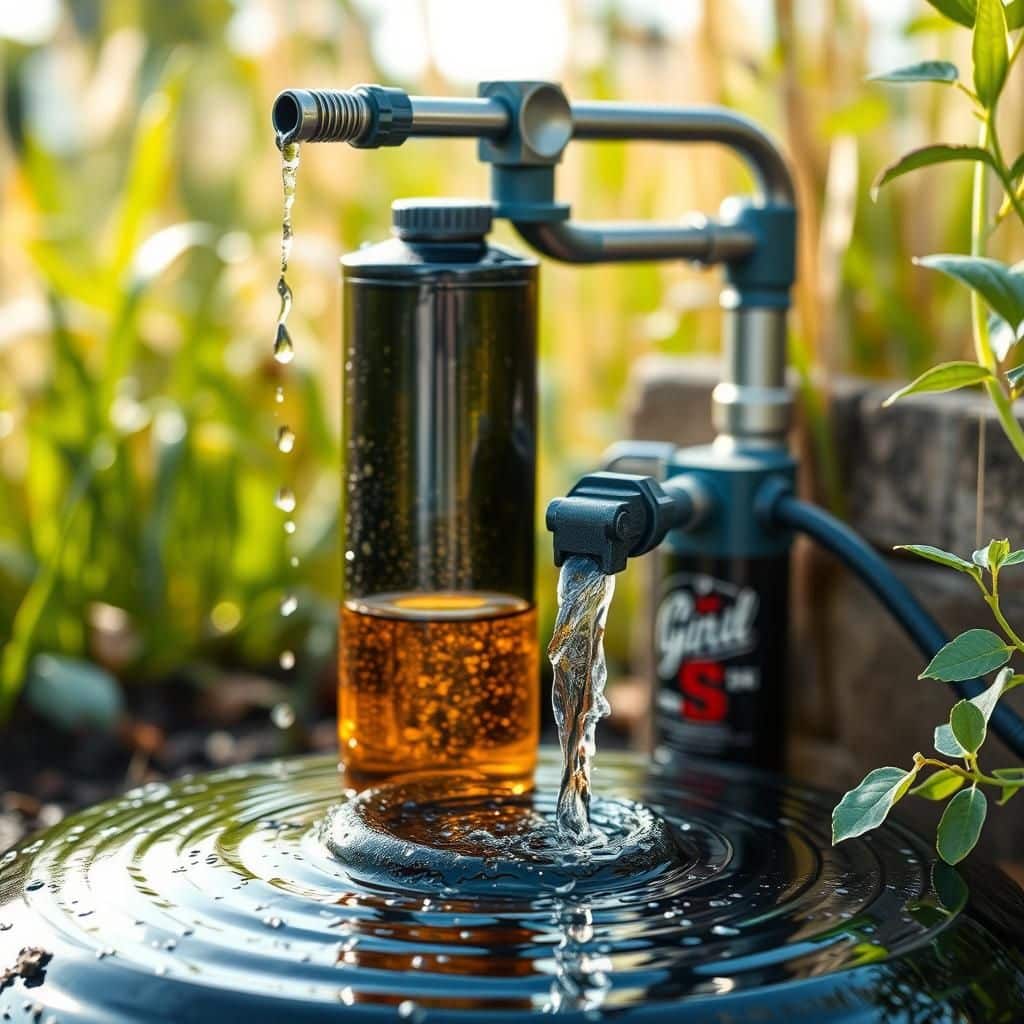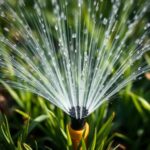Can You Drink Water from a Rainwater Harvesting System? Key Considerations and Safety Tips

Rainwater harvesting systems have gained popularity as a sustainable solution for water supply, particularly in areas facing water scarcity. However, the question arises: can you safely drink water collected from these systems? While rainwater is naturally pure, various factors could affect its quality, from environmental contaminants to system maintenance. In this article, we will explore the key considerations for determining the safety of drinking rainwater, discuss potential risks, and provide essential safety tips to ensure that harvested rainwater can be a viable resource for potable use. Understanding these elements is crucial for making informed decisions about water consumption.
Can You Drink Water from a Rainwater Harvesting System?
Yes, you can drink water from a rainwater harvesting system, but several factors need to be considered to ensure its safety and potability. The water collected from roofs and surfaces can contain various contaminants, including bacteria, debris, and chemicals. Therefore, it is essential to have a proper filtration and purification system in place before consumption. Many regions require adherence to specific regulations and guidelines for treating rainwater for drinking purposes, and individuals should be aware of local laws and best practices. Regular maintenance of the collection system, along with testing the water quality periodically, is crucial in ensuring that the rainwater is safe for drinking.
Understanding Rainwater Harvesting Systems
Rainwater harvesting systems collect rainwater for various uses, including irrigation, toilet flushing, and potable water. These systems typically consist of roofs that channel rain into gutters, which then lead to storage tanks or cisterns. Understanding how these systems work is essential for determining whether the water is safe to drink. Contamination risks can arise from the materials used in the collection system, the type of roofing material, and the cleanliness of the surfaces from which the water is harvested.
Water Quality Concerns
The quality of rainwater is heavily influenced by its collection source and the environmental conditions in the area. Rainwater can be contaminated with microorganisms, chemicals, and environmental pollutants. It is critical to conduct regular water quality tests to monitor levels of pathogens, heavy metals, and other contaminants. Ensuring that the storage tanks are sealed and proper maintenance is performed can help minimize these risks and improve overall water quality.
Treatment and Filtration Methods
Before consuming rainwater, it typically requires treatment to ensure its safety. Common methods include mechanical filtration, UV light treatment, and chemical disinfection to eliminate potential pathogens. The choice of treatment depends on the specific contaminants present and local regulations. A multi-barrier approach, which utilizes several methods in conjunction, is often recommended to provide the highest level of safety for drinking water.
See also:
Regulations and Guidelines
Many regions have specific regulations regarding the use of rainwater for drinking purposes. These guidelines can vary significantly by location, so it is vital to research local laws. In some places, individuals may need to obtain a permit or have their system inspected to ensure compliance with all safety standards. Following these regulations helps safeguard public health and can also enhance trust in rainwater as a viable drinking source.
Testing and Maintenance
Regular testing and maintenance of the rainwater harvesting system are essential components of ensuring safe drinking water. Water should be tested for contaminants at least once a year or more frequently if there are visible issues or after significant weather events. Maintaining the storage tanks by keeping them clean and ensuring that the system is free from debris can help prevent contamination and keep the water safe for consumption.
| Aspect | Details |
|---|---|
| Collection | Water is harvested from roofs and surfaces. |
| Testing | Regular quality checks for contaminants are essential. |
| Treatment | Methods include filtration, UV treatment, and chlorination. |
| Regulations | Follow local laws and guidelines for safe consumption. |
| Maintenance | Keep systems clean to prevent contamination. |
Safety Measures for Consuming Rainwater
Drinking water collected from a rainwater harvesting system may be feasible, but it requires careful consideration of several factors. Potential contaminants from the roof, gutters, and storage tanks can pose health risks, making it essential to implement proper filtration and disinfection methods. Regular maintenance of the collection system is crucial to prevent the buildup of bacteria and other harmful substances. Moreover, understanding the local regulations regarding rainwater use and conducting regular water quality testing will ensure that the harvested rainwater meets safety standards for potable use.
Understanding Rainwater Contamination Sources
Rainwater can become contaminated during its journey from the atmosphere to your collection system. Common sources include debris, bird droppings, and pesticides from the roof surface. In addition, gutter systems can accumulate dirt and organic material, creating a breeding ground for microorganisms. Identifying and mitigating these potential contamination sources is vital to ensure the safety of the harvested water for drinking purposes.
Filtration and Purification Techniques
To make rainwater safe for consumption, effective filtration and purification techniques must be employed. First, a good first flush system can help divert the initial runoff, which often contains the highest levels of contaminants. Following this, reliable filtration systems such as ceramic filters or UV purification can further eliminate pathogens and sediment, providing cleaner water suitable for drinking. Ultimately, choosing the right purification method not only ensures safety but also improves water quality.
See also:
Regular Maintenance Practices
Regular maintenance of the rainwater harvesting system is essential for ensuring safe water quality. This includes routine cleaning of gutters, downspouts, and storage tanks to remove debris and prevent blockages. It’s equally important to inspect and replace any worn or damaged components that could lead to contamination. Additionally, conducting frequent water quality tests will help in identifying any issues early on and allow for timely interventions.
Legal and Regulatory Considerations
Before consuming rainwater, it is crucial to understand the legal and regulatory considerations in your area. Many regions have specific laws governing the collection and usage of rainwater, which may include compliance with local health standards and guidelines. Consulting with local authorities can provide insights into the necessary permits and regulations, enabling you to use rainwater safely and legally for drinking.
Importance of Water Quality Testing
Regular water quality testing is a critical step in ensuring that harvested rainwater is safe to drink. Tests can detect a range of contaminants, including bacteria, heavy metals, and chemical residues. By conducting these tests periodically, you can assess the safety of your water supply and make necessary adjustments to your filtration or purification methods. Understanding the results of these tests equips you with the knowledge to make informed decisions about the safety of the water you consume.
Questions from Our Readers
Can you drink water from a rainwater harvesting system?
Yes, you can drink water from a rainwater harvesting system, but it is essential that the water undergoes proper filtration and treatment to ensure it meets health and safety standards. Without proper treatment, the water may contain contaminants that could pose health risks.
What are the necessary steps to make rainwater safe for drinking?
To make rainwater safe for drinking, you should collect the water in a clean storage tank, use a first flush diverter to eliminate the initial runoff, and install a filtration system followed by a disinfection method such as UV treatment or chlorination. This process ensures that harmful bacteria and particles are removed.
See also:
Is rainwater harvesting legal for drinking purposes?
The legality of rainwater harvesting for drinking purposes varies by region or country, as some places have specific regulations and guidelines that dictate how the harvested water can be used. It’s crucial to check local laws to ensure compliance.
What are the benefits of using rainwater for drinking?
Using rainwater for drinking can significantly reduce the demand on local water supply, promote sustainability, and lower water bills. Additionally, it allows for self-sufficiency in water resources, especially in areas prone to water shortage.

If you want to read more articles like Can You Drink Water from a Rainwater Harvesting System? Key Considerations and Safety Tips, we recommend you check out our Irrigation category.
Leave a Reply
Related Articles